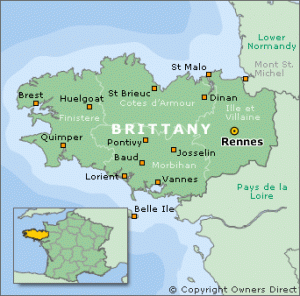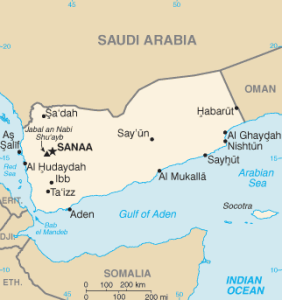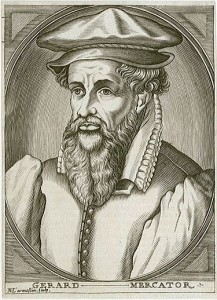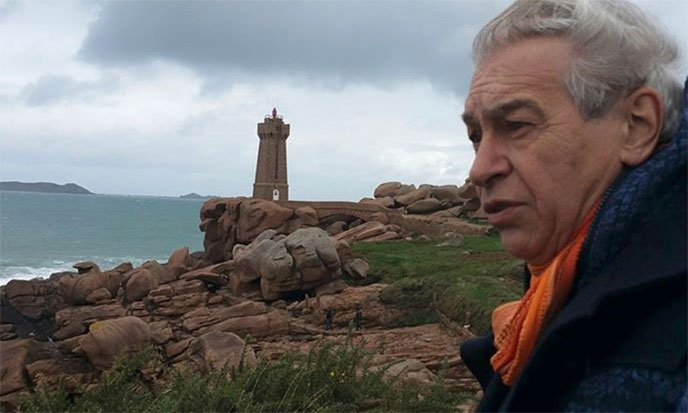megaliths
Séguin, Xavier
Xavier Séguin (1949- ) is the French author of the Eden Saga website(a). We have encountered Séguin in Atlantipedia in relation to a number of subjects. Some of his ideas are, in my opinion, simply daft. For example, he suggests that megalithic dolmens and menhirs can generate vril energy, which can be used to expedite the maturing of wine(b)!
The most exotic suggestion regarding the Etruscans comes from Séguin, who has claimed that they share a common ancestry with the Yoruba of West Africa, as both originated in Atlantis(c), a concept ‘borrowed’ from Leo Frobenius. He also offered a most extreme theory regarding the Olmecs with the claim that they were astronauts. This idea was expressed(d) by Séguin, quoting US astronaut Gordon Cooper [1757]!
However, I considered Séguin to be totally unreliable when I found that he also quoted a fictional character, Professor Mortimer, from a work by the renowned writer, Edgar P. Jacobs, as supposedly uttered by a real scientist(e), in relation to the Pillars of Heracles.
He denies that Atlantis was situated on the floor of the Atlantic, instead he proposes that Atlantis, Punt, Mu and Hyperborea had all been satellites(f)! Similar ideas were put forward Dieter Bremer.
(a) Sources Archives – Eden Saga – english (eden-saga.com)
(c) http://eden-saga.com/en/survivors-from-atlantis-frobenius-sixteen-gods-oracle-of-fa.html
(d) http://eden-saga.com/en/gordon-cooper-finds-olmecs-deep-knowledge-in-astronautics.html
Dodson, Frederick
Frederick Dodson is the author of Atlantis and the Garden of Eden[0989] and has published a number of
excerpts from it on his website(a). These deal with, the Basques, Berbers, Etruscans, Minoans and Guanches among other subjects. He also includes a commentary on ancient maps(c).
He has devoted much space in his book and his website to the mystery of very large megaliths, such as at Baalbek and the unfinished obelisk at Aswan(d).
What I read seemed fairly standard fare, but then in a second book[1657], he advanced into ‘ancient astronaut’ territory, at which point I parted company with him.
Even more hilarious is his The Pleiades and Our Secret Destiny[1658] in which he tells the story of his encounters with blue-skinned beings from the Pleiades!
Dodson is also self-promoted as a ‘reality creation’ coach(b). Hmm.
(a) https://www.ancient-atlantis.com/ (offline October 2017)
(b) https://www.realitycreation.org/
(e) https://www.realitycreation.org/ancient-aliens-of-atlantis/
Bretons *
The Bretons are a cultural grouping located in Brittany in northwest France, where the most outstanding megalithic monuments of Europe are situated. Today, the Bretons consider themselves a separate Celtic  people, with a strong nationalist movement(c).
people, with a strong nationalist movement(c).
It was in 1839 that the Rev. Algernon Herbert (1792-1855), Dean of Merton College, Oxford, was the first to use the term ‘megalithic’ in a paper describing the monuments of England and Brittany.
Since the middle of the 19th century a number of commentators right up to the present have labelled the Bretons as Atlantean. These include R. Cedric Leonard(a), who In support of this idea cites both Stephen Oppenheimer and Herodotus, although he does so some reservations. Hank Harrison wrote Finding Atlantis in which, he supported the idea of a megalithic Atlantis with its centre of power probably located in the Morbihan area of Brittany.
In the 19th century, Ignatius Donnelly quoted Eugene Bodichon as expressing a similar view[021.389]. Bodichon’s opinion is simply based on the temperament and physical similarities between the Bretons and the Berbers of North Africa. Similarly, Gerry Forster refers to Bodichon’s opinion in his The Lost Continent Rediscovered(b). I do not think that the case is proven, even if the legendary kingdom of Ys, reputedly off the Brittany coast, is brought into the debate.
(a) See: https://web.archive.org/web/20170113172907/https://www.atlantisquest.com/Bretons.html
(b) Gerry Forster (archive.org) *
(c) https://ansionnachfionn.com/2011/08/18/at-home-amongst-the-bretons/
Adam’s Calendar
Adam’s Calendar, also called the Blaauboschkraal stone ruins, is claimed to be the oldest known arrangement of standing stones in the world. It was discovered by Johan Heine, a pilot and firefighter. While the amazing discoveries at Gobekli Tepe have received widespread publicity, Adam’s Calendar is virtually unknown.
 Heine together with astronomer Bill Hollenbach have identified a number of astronomical alignments at the site and have controversially dated the monument to between 75,000 and 250,000 years ago(a). Adam’s Calendar is one of many thousands, perhaps hundreds of thousands, of man-made stone features across southern Africa. A blog on Dale Drinnon’s website elaborates with images on these enigmatic structures(d).
Heine together with astronomer Bill Hollenbach have identified a number of astronomical alignments at the site and have controversially dated the monument to between 75,000 and 250,000 years ago(a). Adam’s Calendar is one of many thousands, perhaps hundreds of thousands, of man-made stone features across southern Africa. A blog on Dale Drinnon’s website elaborates with images on these enigmatic structures(d).
One of their interesting claims is that the alignments with the cardinal points were all out by 3°17’43’’ suggesting a crustal displacement.
To my eye Adam’s Calendar is very similar to the megalithic astronomical circle at Nabta Playa in the northern Sahara.
Johan Heine teamed up with writer Michael Tellinger to produce two books, Adam’s Calendar (2008)[803]and Temples of the African Gods (2010)[804]. These books are heavily illustrated but light on text. However, in my view, what really detracts from them is the pathetic attempt to link Adam’s Calendar with the ancient astronaut theories of the late Zechariah Sitchin and his Sumerian Annunaki gods. For good measure in a lengthy paper on Graham Hancock’s website(e). Tellinger has thrown in the claim that the circular stone ruins are “energy generating devices“! I suspect that all this nonsense was introduced as padding by Tellinger(c) who had written previously about extraterrestrial interference with mankind in his Slave Species of God [805].
For good measure Tellinger, when referring to Sitchin’s Annunaki, also claims “that Great Zimbabwe was Enki’s ‘Headquarters’, simultaneously dating it to c. 260,000 years old.”(h)
A highly critical commentary of Heine’s claims should be read for balance(g).
In 2011 Andrew Collins visited the site(b) and was impressed by what he saw. However, he was, as I am, quite sceptical about the dating of the monument in the absence of stronger evidence. He was dubious about the 3°17’43’’ misalignment due to the ‘jumbled’ positioning of some of the stones on the southern side. He concludes with a call for further investigation and research.
Tellinger has a website with links to his books and videos(f).
(a) https://www.megalithic.co.uk/article.php?sid=22930
(b) https://www.andrewcollins.com/page/articles/txsa_4_adams.htm
(c) https://www.bibliotecapleyades.net/sumer_anunnaki/esp_sumer_annunaki34.htm
(d) See: Archive 3590
(e) https://grahamhancock.com/tellingerm1/
(g) https://sacredsites.com/africa/south_africa/adam_s_calendar_stone_ring.html
Aden
 Aden was formerly a British possession and is now part of war-torn Yemen. Stan Deyo, author of The Vindicator Scrolls[784], in 1989 located Atlantis in Aden. A Dutch amateur Egyptologist, Alexander Muster, also promotes a similar idea through a variety of Internet forums. A former French police chief, Jacques Hébert, has proposed that the Yemeni island of Socotra was part of the Atlantean civilisation.
Aden was formerly a British possession and is now part of war-torn Yemen. Stan Deyo, author of The Vindicator Scrolls[784], in 1989 located Atlantis in Aden. A Dutch amateur Egyptologist, Alexander Muster, also promotes a similar idea through a variety of Internet forums. A former French police chief, Jacques Hébert, has proposed that the Yemeni island of Socotra was part of the Atlantean civilisation.
>Yemen’s long history was highlighted just before the end of the last century, when a group of megaliths were discovered, by chance, on the coastal plain of western Yemen(c).<
In 2008, Gary Vey and John McGovern claimed to have evidence that the Ark of the Covenant had been buried in Yemen (the ancient kingdom of Saba)(b).
>Immanuel Velikovsky placed the Garden of Eden in Aden(d).<
A recent Russian website(a) also places Atlantis in the Gulf of Aden opposite the legendary land of Punt in what is now Somalia.
(a) https://sites.google.com/view/atlantis-aden/main
(b) Proto-Canaanite / First Tongue / Ark of the Covenant (viewzone.com)
Harrison, Hank
Hank Harrison (1941- ) is an American writer and publisher and sometimes  better known as the father of the singer, Courtney Love and father-in-law of the late Kurt Cobain. Among a range of subjects he has expressed great interest in Megalithic Europe in two of his books, The Stones of Ancient Ireland(a) and Finding Atlantis. In the latter, he supports the idea of a megalithic Atlantis with its centre of power probably located in the Morbihan area of Brittany.
better known as the father of the singer, Courtney Love and father-in-law of the late Kurt Cobain. Among a range of subjects he has expressed great interest in Megalithic Europe in two of his books, The Stones of Ancient Ireland(a) and Finding Atlantis. In the latter, he supports the idea of a megalithic Atlantis with its centre of power probably located in the Morbihan area of Brittany.
>In The Cauldron and the Grail [1789] Harrison focuses on the cultural background of the megalith builders. His instincts told him that many of the important sites had both a functional purpose an astronomical predictors and as early religious centres.<
Another recent book by Harrison is Arthur the God(b).
(a) https://www.arkives.com/soai/soai.pdf (offline Mar.2016) see Archive 2930)
(b) https://sites.google.com/site/arthurianmythandlegends/home/arthur-the-god
Tributsch, Helmut *
Helmut Tributsch (1943- ) was born in a small German-speaking enclave in Fruili in North East Italy. He was a Professor of Physical  Chemistry from 1982 at the Free University of Berlin until his retirement in 2008. When his birthplace was destroyed in 1976 by an earthquake he began a study of animal behaviour prior to such events and their role as earthquake predictors, leading to the publication of Wenn die Schlangen erwachen (When the Snakes Awaken) in 1978.
Chemistry from 1982 at the Free University of Berlin until his retirement in 2008. When his birthplace was destroyed in 1976 by an earthquake he began a study of animal behaviour prior to such events and their role as earthquake predictors, leading to the publication of Wenn die Schlangen erwachen (When the Snakes Awaken) in 1978.
His interests also extended to include Atlantis, regarding which, he published Die Gläsernen Türme von Atlantis[718] (The Glass Towers of Atlantis) in 1986. His view was that megalithic Europe, North Africa and the Mediterranean constituted Atlantis, bounded by water on three sides and a little-known border to the east, it could be considered an island. Tributsch suggested that the island of Gavrinis near Carnac in Brittany had been the capital of this Atlantean civilisation.(c) Hank Harrison placed Atlantis in the same locality.
Tributsch dated the destruction of Atlantis to 2200 BC, a date also favoured by Anton Mifsud.
Further details regarding the content of Tributsch’s book, in English, are available on his website(a).
A more extensive article about the theories of Tributsch is available on the Atlantisforschung website with an English translation here(d).
(c) About Atlantis localization on Gavrinis – Atlantisforschung.de (atlantisforschung-de.translate.goog) (English)
(d) Tributsch’s Atlantida Exegesis – Atlantisforschung.de (atlantisforschung-de.translate.goog) (English)
Lampedusa
Lampedusa is the principal island of the Pelagian (Pelagie) archipelago off the coa st of Tunisia, between the African mainland and Malta, and is controlled by Italy.
st of Tunisia, between the African mainland and Malta, and is controlled by Italy.
Anton Mifsud and his co-authors offer evidence[209] that Atlantis was actually a large island that joined Malta to Lampedusa and contends that the famous archaeological sites on Malta are just remnants of the Atlantean civilisation. However, as can be seen from bathymetric maps, if Malta was joined to Lampedusa it may also have been connected with what is modern Tunisia, completing the Sicilian land bridge. The implications of this claim are that if true, it is quite probable that there was also a Gibraltar Dam and that during the last Ice Age, the Mediterranean was reduced to a number of relatively small freshwater lakes.
A website(a) published by Diego Ratti has now highlighted that tiny Lampedusa has an interesting collection of megalithic remains including a feature that has been  dubbed the ‘Lampedusa Stonehenge’.A 39-page booklet, by Ratti, which describes this feature in greater detail can now be downloaded(b). Ratti is a financial consultant by profession and the author of two books, Wall Street Watchman and The Skywatching Trader. However, his love of astronomy, archaeology and Lampedusa came together in the development of his website.
dubbed the ‘Lampedusa Stonehenge’.A 39-page booklet, by Ratti, which describes this feature in greater detail can now be downloaded(b). Ratti is a financial consultant by profession and the author of two books, Wall Street Watchman and The Skywatching Trader. However, his love of astronomy, archaeology and Lampedusa came together in the development of his website.
In 2015 he published, in Italian, a book on the prehistory of Lampedusa, La preistoria di Lampedusa. In 2016 Ratti also discovered a “prehistoric underwater place of worship” off the eastern coast of the island(c), which he describes as a temple similar in layout to those found on Malta(d).
In the Introduction to a 2016 paper describing a prehistoric village on Lampedusa he wrote “A prehistoric hut with Stentinello pottery found in Cala Pisana provided evidence for a late fifth millennium BC colonisation of Lampedusa island by people from Sicily, chronologically around the same time of the Malta early colonisation.”
In 2021, Ratti, controversially proposed in his new book Atletenu [1821], an Egyptian location for Atlantis, centred on the Hyksos capital, Avaris.>Around the same time he had some of his earlier postings removed from the internet!<
(a) https://web.archive.org/web/20181128232114/https://www.megalithic-lampedusa.com/
(b) lampedusa-stonehenge (archive.org) *
(e) About | Atletenu (archive.org)
(f) (99+) Lampedusa: prehistoric village of Tabaccara coast | Diego Ratti – Academia.edu
Kaulins, Andis
 Andis Kaulins (1946-2022) was born in Latvia. He studied law in the United States and lectured on the subject at a number of universities there. He later taught law at the universities of Kiel and Trier. His real love would seem to be golf as well as the study and interpretation of ancient megaliths(a) together with their inscriptions and carvings. He has authored a book[423] on the subject of ancient megaliths and their astronomical significance. He was also the webmaster of megaliths.net(c), which is extensive but incomplete!
Andis Kaulins (1946-2022) was born in Latvia. He studied law in the United States and lectured on the subject at a number of universities there. He later taught law at the universities of Kiel and Trier. His real love would seem to be golf as well as the study and interpretation of ancient megaliths(a) together with their inscriptions and carvings. He has authored a book[423] on the subject of ancient megaliths and their astronomical significance. He was also the webmaster of megaliths.net(c), which is extensive but incomplete!
>Kaulins was greatly interested in the development of writing and published a paper on the subject(d). Additionally, in 1980 Kaulins also published at least two papers on the decipherment of the Phaistos Disk(e). Kaulins had an interest in a wide range of historical subjects including Egyptology, regarding which he offered some unexpected identifications(f);
“The identity of Tutankhamun can be explained as follows:
In my opinion, the evidence is incontrovertible that King Saul = Echnaton (Akhenaten), King David = Sethos and King Solomon = Ramses II with Shishak = Ramses III.
Accordingly, Tutankhamun can only be ATON, i.e. JON-ATHON (“young Aton, young Adonis, “Jaun-(IE)donis”), one of the sons of Saul in the Bible. Saul was Echn-ATON viz. Akhen-ATEN (“old Aton”, old Adonis, “Vec-(IE)Donis”). The other brother was Semenchkare, Biblical Ish-Boshet, who served a short time as Pharaoh before being executed.”<
Dr Kaulins believed that Atlantis did exist and considered two possible regions for its location; the Minoan island of Thera or some part of the North Sea that was submerged at the end of the last Ice Age when the sea levels rose dramatically. Kaulins noted that part of the North Sea is known locally as ‘Wattenmeer’ or Sea of Mud’ reminiscent of Plato’s description of the region where Atlantis was submerged, after that event. He suggested(b) that the Pillars of Heracles were located on either side of a narrow channel that had once existed between Tunisia and an extended Sicily that had included the Maltese Islands. He also believes that in the Central Mediterranean region, Carthage was possibly built on the remains of Tartessos!
(a) http:///www.lexiline.com (link broken)
(b) Pillars of Heracles – Alternative Location (archive.org)
(c) Megaliths Megalithic Sites Standing Stones Megaliths.Net (archive.org)
(d) (PDF) Ancient Signs: The Alphabet & the Origins of Writing (researchgate.net) *
(f) LEXILINE JOURNAL: Who was Tutankhamun – Jonathon Aton – The Me’il – LexiLine Journal 347 *
Hyperboreans *
The Hyperboreans in Greek mythology lived to the far north of Greece in a land called Hyperborea, which means beyond the North Wind or Boreas, which has been linked by a number of writers with the Atlanteans. Even more exotic is the claim on one loony website that the Hyperboreans were an ancient extraterrestrial race (see end)! (j)
Researchers have variously identified this land of Hyperborea with Iceland, the British Isles, and the North Sea. Like many classical references and later commentators, there is no clear consensus on a precise location. Hecataeus of Abdera, a 4th century BC Greek historian, noted that the Hyperboreans were located “in the lands of the Celts, in the ocean, (where) there is an island no smaller than Sicily.”
Diodorus Siculus described Hyperborea as a northern island with a temple to which the god returns every nineteen years. This was initially thought by many to be a reference to England’s Stonehenge, but the renowned Aubrey Burl considered Stonehenge to be 500 miles too far south and instead proposed the Hebridean island of Lewis home to the famous Callanish megalithic site, which includes the ability to record the return of the stars to the same position every nineteen years(c).
Olof Rudbeck‘s over-enthusiastic nationalism not only brought him to associate Atlantis with Sweden but also linked the writings of Homer and other classical writers with the prehistory of his homeland. This inevitably led him to declare ancient Sweden as Hyperborea. David King outlines how Rudbeck came to this conclusion [530.71].
However, Homer reportedly(h) placed Boreas in Thrace, and therefore Hyperborea, according to him, would be located north of Thrace, in Dacia, modern Romania!
Jürgen Spanuth based his Atlantis theory[0015] on an unambiguous identification of the Atlanteans with the Hyperboreans of the Baltic region, specifically nominating Jutland, part of today’s Denmark, as the land of the Hyperboreans [p.88].
 The renowned Flemish cartographer, Gerardus Mercator (1512-1594), showed a large archipelago near the North Pole on one of his charts. This inclusion by him and other cartographers of the period stemmed from a now-lost book by an English Franciscan friar entitled Inventio Fortunatae (The Discovery of the Fortunate Isle).
The renowned Flemish cartographer, Gerardus Mercator (1512-1594), showed a large archipelago near the North Pole on one of his charts. This inclusion by him and other cartographers of the period stemmed from a now-lost book by an English Franciscan friar entitled Inventio Fortunatae (The Discovery of the Fortunate Isle).
Based on ancient maps and the work of other researchers such as Emilio Spedicato, Stuart L. Harris has proposed(e) that Hyperborea was also known as Atland to the Frisians. He further suggests that this land disappeared in 2194 BC as noted in the controversial Oera Linda Book, and that today’s Faroe Plateau topped by the Faroe Islands are its remnants.
It also appears that in the 18th century, the Russian Empress Catherine II organised an expedition in an attempt to find Hyperborea in the vicinity of the North Pole, in a pathetic attempt to discover ‘the elixir of eternal youth” allegedly invented by the Hyperboreans. She was apparently captivated by the descriptions of the classical writers who related that the Hyperboreans lived in total happiness for a thousand years.
It was reported in 2006(a) that a Russian scientist, Valery Dyemin, inspired by the work of Jean-Sylvain Bailly and William Fairfield Warren was attempting to prove the reality of Hyperborea in the Arctic region. Another Russian, Sergey Teleguin has also attributed a North Pole origin to both the Maya and the Indo-Europeans(b).
J.G. Bennett, a British philosopher, has opted for a Hyperborean origin for the Indo-European culture, a claim that has resonances with the Nazi claim that Hyperborea has been the ancestral home of the ‘master race’. He also supported the idea of an Arctic Hyperborea(i), inspired by the ideas of Bal Gangadar Tilak, although at the same time, he was critical of Warren’s reasoning.
Luciano Chiereghin, who promotes the idea of Atlantis being situated in Italy’s Po Valley, also claims that the same river valley and its plain were also previously known as Hyperborea! The authors of The Three Ages of Atlantis, Marin, Minella and Schievenin, also refer to “the Hyperboreans of the Po Valley” [972.181].
Wikipedia includes some of the more bizarre ideas regarding Hyperborea(h).
“Robert Charroux first related the Hyperboreans to an ancient astronaut race of “reputedly very large, very white people” who had chosen “the least warm area on the earth because it corresponded more closely to their own climate on the planet from which they originated” [766.29]. Miguel Serrano was influenced by Charroux’s writings regarding the Hyperboreans.”
An extensive internet article outlines the mythology associated with Hyperborea and recent efforts to determine its location(d). The Theoi.com website(g) offers a list of all classical references to Hyperborea.
(a) http://english.pravda.r science/mysteries/29-11-2006/85697-paradise u/science/mysteries/29-11-2006/85697-paradise-0/
(b) https://mayanarchaeology.tripod.com/id23.html
(c) https://humansarefree.com/2014/12/a-hyperborean-temple-stone-circles-of.html
(d) Mysterious Hyperborea | Earth Chronicles News (archive.org) *
(e) https://www.academia.edu/36044603/Identification_of_Hyperborea_with_Atland_and_Frisland
(f) History, 3a.264. F.7.5.
(g) https://www.theoi.com/Phylos/Hyperborea.html
(h) https://en.wikipedia.org/wiki/Hyperborea
(i) THE HYPERBOREAN ORIGIN OF THE INDO-EUROPEAN CULTURE by J. G. Bennett from SYSTEMATICS I/3
(j) Hyperboreans: An ancient alien race that lived on Earth – Infinity Explorers


